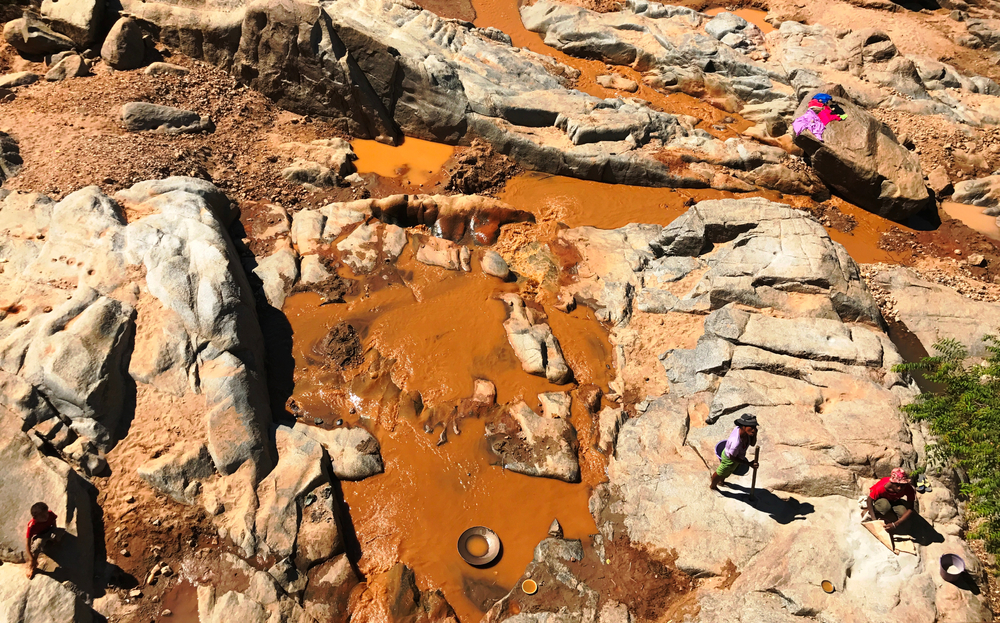There is no denying that mining is a highly contentious industry: Its unsustainable environmental impact stands in stark contrast to its indispensable role in the daily life of our modern society for which it provides fuels, metals and minerals. The topic is thus virtually bound to discussion. But one aspect more intricate than the actual existence of mines is the position of women in this male-dominated industry. Only about one sixth of the mining workforce globally is female, and the sector finds itself with the highest gender pay gap of any industry—reaching 25 percent in the UK alone.
The pitfalls of this underrepresentation take several dimensions. Most visibly, surveyed women report little sense of belonging in their workplace, feeling like intruders in the ‘boy’s club’. Not without reason some also refer to it as ‘man camps’: Mining sites are often dominated by heavy drinking and harassment, the latter often treated as an open secret. This is most common on fly-in-fly-out (FIFO) mining operations that are often found in countries like Canada or Australia, where workers get flown into camp-style sites for prolonged periods of time.
But not only the women on site are affected. The drastic separation of work and home increases the likelihood of miner’s spouses taking on care work at home while their partner is away. Together with an increase in income inequality between partners, it produces fertile ground for increasing gender inequality and domestic violence.


Most pressing, however, is the persistent abuse many female workers have to face during their work in the mines itself. In 2022, Rio Tinto, the second-largest mining corporation in the world, reported over twenty cases of female employees being victim of attempted or actual cases of rape and sexual assault within the last five years. Sexual harassment rates on their FIFO sites are reported at around 41 percent of all female workers. BHP, another mining corporation and competitor of Rio Tinto, reported that they dismissed more than 48 workers due to sexual assault since 2019. Beyond this, cases of bullying and racism are also widely spread.
In developing countries of the global South, further issues arise. While half of the workforce in Senegal’s artisanal gold mines are actually female, they predominantly have to take on more hazardous jobs in the production process. And not only do toxins such as mercury released in the process affect them: the common practice of bringing their children to work due to the lack of care facilities means that even the youngest develop serious health issues. Another problem is highlighted by women in South Africa, who repeatedly report inadequate on-site facilities such as missing female toilets and personal protective equipment that is only available in men’s sizes.


To just quit working in those harmful environments is, however, rarely the solution. More than often, the mines are critical in providing a living—from Canada to Zimbabwe. What then is the solution to reduce the harmful impacts on women across the industry?
Increasing the female labour participation rate has shown to have tremendous benefits that reach beyond the well-known increases in productivity and creativity. A one of a kind project, the Zimbaqua aquamarine mine in rural Zimbabwe, showed that an all-female sustainable mine can not only give women necessary economic independence, but also build skills for higher-paying jobs and even ensure education for their children.
Maddy Troode and Jemma Louise, two female FIFO miners in Australia, argue that while they like their job, more women in their workplace would counteract feelings of isolation and make work a safer space.
Increasing both the participation but especially creating a more equal and respectful environment in the mines is key to counteract the negative effects of the current system. The most common remedies suggested range from promoting women to senior roles, providing equal growth opportunities through targeted education, and, as Australian mining minister Bill Johnston calls for, instating gender quotas to the industry to disperse the wide-spread ‘boy’s club’-feeling. To prevent further harm done to the women it is crucial that this action is taken immediately.
Julia Hampel








